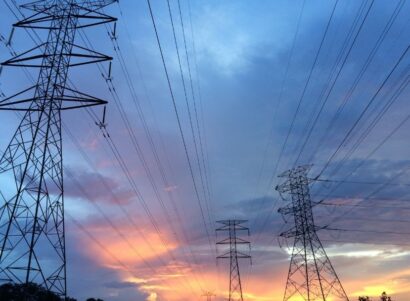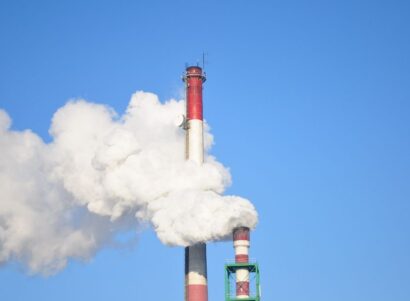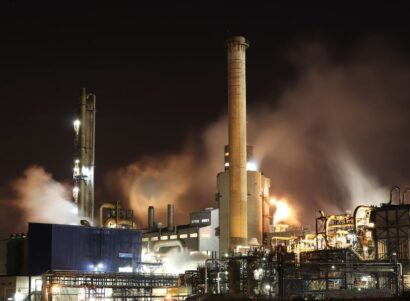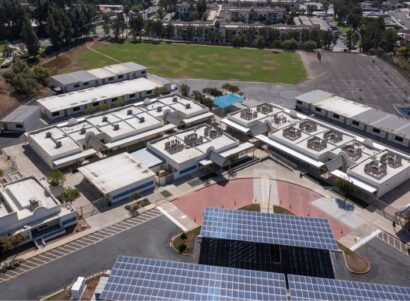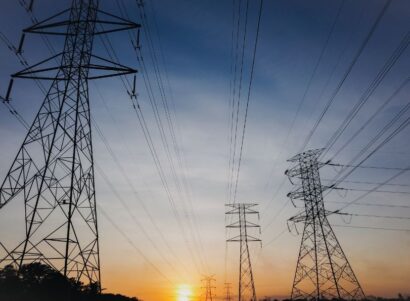The Peaker Replacement Project was created by PSE Healthy Energy with funding from The 11th Hour Project, a program of the Schmidt Family Foundation. The project’s goal is to facilitate understanding of peaker power plants across nine states to identify potential candidates for replacement with solar+storage, using a combination of operational, environmental, and demographic metrics.
The Peaker Replacement Project includes combustion turbine, steam and internal combustion power plants and units at larger plants that are 5MW or larger and burn oil and gas at a low capacity factor – less than 15%. It does NOT include nuclear, solar, wind, hydro, biomass, coal or geothermal generation. The identified plants are typically used to meet peak electric demand and run infrequently compared to larger baseload power plants.
This page provides definitions and descriptions of the data used in the data visualizations for the Peaker Replacement Project. Data sources are listed in our technical documentation. For additional questions please email krieger@psehealthyenergy.org.
Definitions and Description of Data
- Age: Age of oldest power plant unit (years).
- Air basin: Regions designated by the California Air Resources Board for pollution management (see: California Air Basin Map).
- Annual operational hours: Average number of hours a plant runs per year.
- Balancing authority: Grid operator who manages transmission-level grid balancing to ensure that electricity supply will match the load in any given area. The primary balancing authority in California is the California Independent System Operator; the New Jersey grid is managed by PJM; the New York Independent System Operator manages New York; the Independent System Operator-New England balances the grid in Massachusetts; and the Texas grid is operated by the Electric Reliability Council of Texas.
- CalEnviroScreen 4.0: Environmental justice screening tool developed by the California Office of Environmental Health Hazard Assessment to evaluate the relative vulnerability of communities and their cumulative environmental health and socioeconomic burdens. Score is calculated based on an environmental burden score and a demographic score. Census tracts are typically ranked by percentile as compared to all of the census tracts in California. Scores above the 75th percentile overall (or above the 95th percentile in tracts missing a demographic score) indicate a disadvantaged or vulnerable community. (See: CalEnviroScreen 4.0 for tool and methodology.)
- Capacity: The size of a power plant, designated in megawatts (MW), which provides the maximum power a plant can generate at any given point in time.
- Capacity factor: A measure of how frequently a plant operates, defined as the fraction of electricity a power plant produces as compared to the maximum electricity it would produce if it ran constantly. Calculated from data reported by the U.S. Environmental Protection Agency Clean Air Markets Program Database and supplemented, when missing, from the U.S. Energy Information Administration.
[Capacity factor]
= [Actual generation]/[Maximum potential generation]
= [MWh]/[MW*365*24]
- Carbon dioxide (CO2): A greenhouse gas emitted from the combustion of fossil fuels, among other sources. Power plant emission data reported from the U.S. Environmental Protection Agency Clean Air Markets Program Database and supplemented, when missing, with data from the U.S. Energy Information Administration.
- Cogen facility: In addition to electricity, cogeneration plants produce steam, which is typically used in industrial applications like oil production or for space heating. These plants were typically excluded from our analysis because they may meet heating needs even if they are also used to meet peak loads, and therefore require different technical considerations for replacement. However, some plants which no longer produce steam or which produce very minimal steam were included.
- Criteria air pollutants: Six common air pollutants known to harm human health for which the U.S. Environmental Protection Agency has established National Ambient Air Quality Standards. They include ground-level ozone, particulate matter, nitrogen dioxide, sulfur dioxide, carbon monoxide, and lead.
- Cumulative Environmental Justice Index: We developed a Cumulative Environmental Justice Index (EJI) to compare the socioeconomic and environmental burdens on communities living near each power plant. This index is calculated for the population living within a given distance from the plant using a method analogous to the EPA‘s EJScreen Buffer Reports method. We used fifteen environment indicators and eleven socioeconomic indicators from the CDC’s Environmental Justice Index. Indicators were percentile ranked relative to census tracts in the state, then averaged into two categories—environmental and socieconomic—and lastly the scores from each category were summed to estimate the EJI. The selected buffer area’s EJI is then compared to every census tract in the state, such that an EJI Index score of 90 has a higher cumulative environmental justice burden than 90 percent of census tracts in the state.
- Disadvantaged community (CA): Defined in the State of California as being a census tract ranked in the top 25 percent most vulnerable according to CalEnviroScreen or the top 5 percent environmental burden score for census tracts lacking a demographic score; Tribal lands are also included.
- EJ Area: A region designated by state policy as being a potential environmental justice (EJ) community based on various demographic indicators.
- EJScreen: Environmental justice screening tool developed by the U.S. Environmental Protection Agency to identify potentially vulnerable and overburdened communities. Tool includes demographic and environmental burden data. (See: EJScreen for tool and methodology.)
- Generation: The amount of electricity produced at a power plant, typically reported in megawatt-hours (MWh). Data reported by the U.S. Environmental Protection Agency Clean Air Markets Program Database and supplemented, when missing, from the U.S. Energy Information Administration.
- Heat rate: Measure of power plant efficiency, defined as the amount of fuel burned in million British Thermal Units per megawatt-hour of electricity generation (MMBtu/MWh). Calculated from data reported by the U.S. Environmental Protection Agency Clean Air Markets Program Database and supplemented, when missing, from the U.S. Energy Information Administration.
- High ozone days: Defined here as days where the eight-hour ozone concentration in any location in an air basin exceeds the federal air quality standard of 70 parts per billion. Data retrieved from the U.S. Environmental Protection Agency Air Data.
- High particulate matter (PM) days: Defined here as days where the 24-hour PM2.5 concentration in any location in an air basin exceeds the federal air quality standard of 35 μg/m3. Data retrieved from the U.S. Environmental Protection Agency Air Data.
- Less than high school education: Population over age 25 without a high school diploma, General Education Degree or equivalent.
- Linguistic isolation: Households where those over 14 speak a non-English language and speak English less than “very well.”
- Load zone: A region typically designated by the grid operator to identify local power capacity requirements.
- Low-income: Households with income less than twice the federal poverty level.
- Megawatt: A measure of power, which is the rate of electricity produced and used to characterize the maximum power capacity of a plant.
- Megawatt-hour (MWh): A measure of electricity generation; a 100-MW plant operating for one hour produces 100 MWh of electricity.
- Nitrogen oxides (NOx): A criteria air pollutant that also leads to the secondary formation of ozone and particulate matter in the atmosphere.
- Once-through cooling facility: A power plant that withdraws cold water from a nearby source (in California, typically the ocean) and uses it for plant cooling before returning the water back to the environment. California power plants are all required to phase out once-through cooling systems in the coming years.
- Ozone (O3): A criteria air pollutant that typically forms from the reaction of NOx with volatile organic compounds (VOCs) in sunlight, and which can cause respiratory health problems.
- Ozone non-attainment area: A region designated by the U.S. Environmental Protection Agency as being in violation of federal eight-hour ozone standards.
- Particulate matter (PM): A criteria air pollutant consisting of very small particles which can cause cardiovascular and respiratory health problems and lead to premature death. Particulate matter can be emitted directly from fossil fuel combustion (among other sources) or form as a secondary pollutant from sulfur and nitrogen oxides. The subscript of the pollutant refers to the diameter, so that PM2.5 indicates particles that have a diameter of 2.5 microns or less, and PM10 refers to particles that have a diameter of 10 microns or less. Here we typically use PM to refer to PM2.5.
- Peaker: Peaker power plants are defined here as simple cycle natural gas plants, steam plants, internal combustion plants, and occasionally under-utilized gas combined cycle plants which are typically used only a small fraction of the time and are turned on to meet the highest “peak” load — often during hot summer days. We defined any gas or oil plant as a peaker if it operated at an annual capacity factor of less than 15 percent at some point in the last five years, unless that year was clearly an outlier (e.g. unusually low demand during the height of the COVID-19 pandemic in 2020).
- Percent MWh on high ozone days: Percent of electricity generated on days when at least one of the three closest air monitors reports a violation of federal eight-hour ozone standards.
- Percent MWh on high PM days: Percent of electricity generated on days when at least one of the three closest air monitors reports a violation of federal 24-hour particulate matter standards.
- Percentile: For any given indicator, reflects the percent of census tracts within a state that have a lower value for that indicator (e.g. ranking in the 75th percentile for low-income households means 75 percent of census tracts within a state have fewer low-income households).
- PM non-attainment area: A region designated by the U.S. Environmental Protection Agency as being in violation of federal 24-hour PM2.5 standards.
- Population: The number of individuals living within the selected distance of a power plant.
- Population of color: Populations which identify as racially non-white alone, or ethnically as Hispanic or Latinx.
- Primary fuel: The fuel most frequently combusted at a power plant between 2016-2023. Many peaker plants burn both oil and natural gas, but tend to burn one more than another.
- Reliability areas and sub-areas: Regions designated by the grid operator to identify local power capacity needs to meet nearby peak demand.
- Run-hours per start: The average number of hours a plant runs each time it is turned on.
- Starts: Defined here as the number of times per year a power plant moves from zero generation in one hour to a non-zero value the following hour, as reported in the U.S. Environmental Protection Agency Clean Air Markets Program Database.
- Unit: Defined here as a specific technology type (e.g. combustion turbine) at a power plant. A power plant may consist of a single unit or of multiple units, only some of which may be used to meet peak demand.
- Utility: Entity responsible for electricity service in a given territory.
